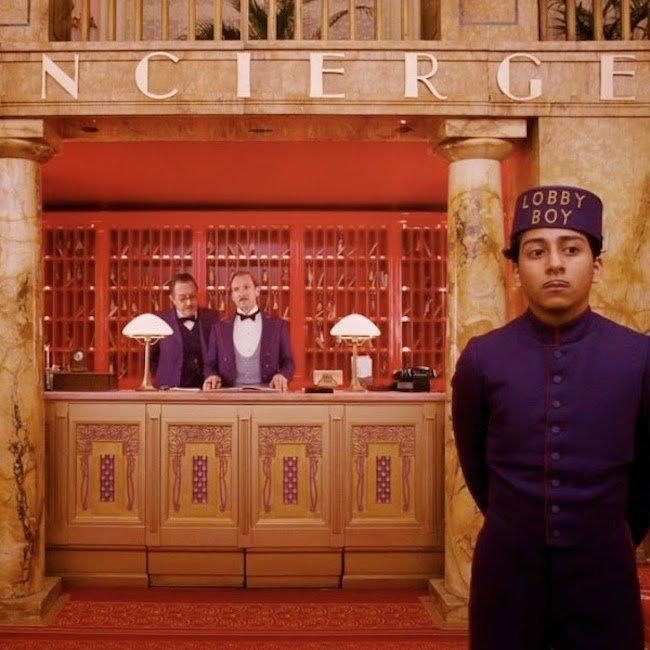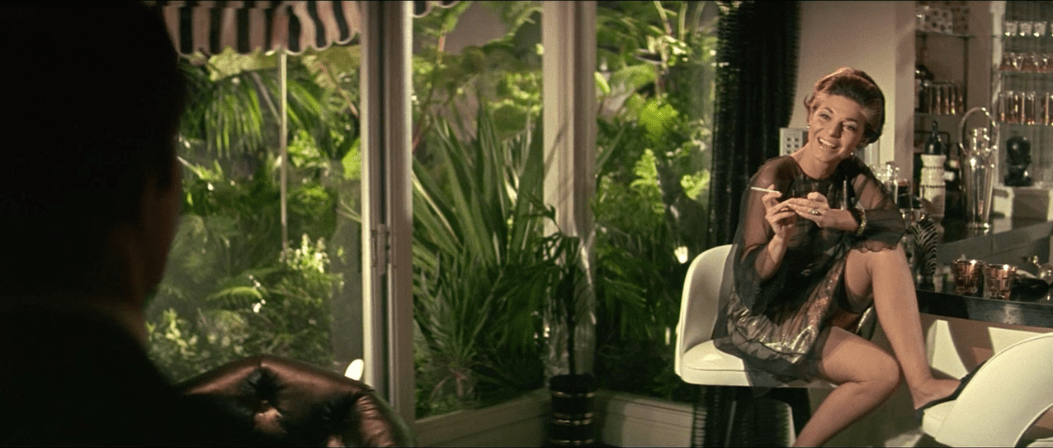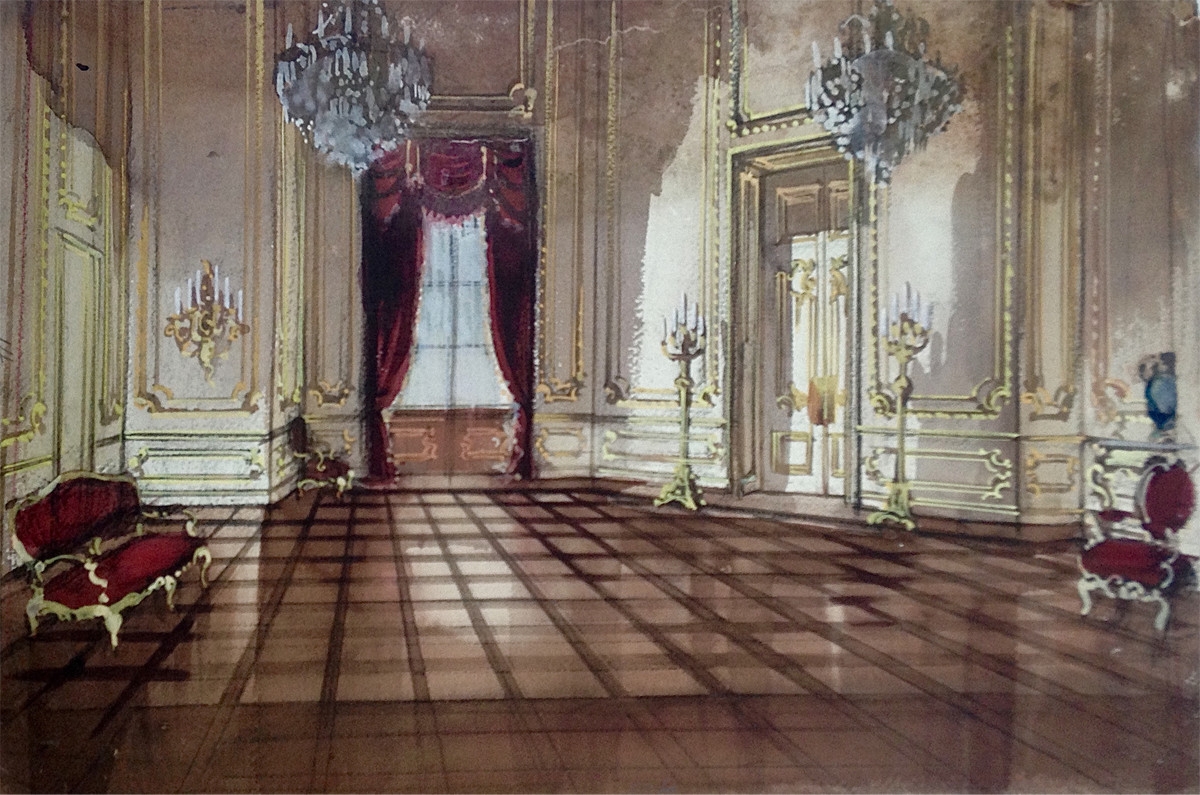
5 of the Most Drop-Dead Gorgeous Movie Set Designs in Cinema History
Home for the holidays, cosy on the sofa, watching all your favourite movies – from the contemporaries to the classics? If you’re anything like us, you’re probably as invested in the interior design tips you can pick up as you are the plot lines. Well, if you’re looking for inspiration, here are some of the coolest, most luxurious and simply fabulous film sets ever to grace the silver screen.

1. Breakfast at Tiffany’s (1961)
There are few more gorgeous sets in movie history than that of the Blake Edwards classic, Breakfast at Tiffany’s, starring Audrey Hepburn and George Peppard.
From the wild-and-weird freestanding bathtub in the living room that’s been sawn in half to make a sofa to the box crate coffee table and zebra skin rug, New York city playgirl Holly Golightly’s Manhattan apartment is a feast of creative boho and shabby chic to inspire our inner hipster. Part way through the film, she even redecorates, adding a bull’s head trophy to one wall, a witchy black lace lampshade to her ceiling light and screen-printed posters of Latino iconography throughout.
Meanwhile, Peppard’s character Paul Varjak lives upstairs amidst the opulent, high-end clutter of his “decorator” Emily Eustace’s Park Avenue style. And it couldn’t be more different to Holly’s! An ornate gold leaf clock, alabaster sculptures, regal woven textured blue wallpaper and imposing statuesque candelabras help to shape our idea of him as an elegant, if somewhat molly-coddled, aspirant.

2. The Grand Budapest Hotel (2014)
Like all his films, Wes Anderson’s fantastical 1920s caper is situated within a Maximalist world of opulent colour.
Filmed in Gorlitz, Germany and set in the fictional Republic of Zubrowka, the location for the movie was inspired by the famous Czech spa town of Karlovy Vary. Here, a hotel incredibly similar to The Grand Budapest, The Hotel Imperial, sits atop a mountain that overlooks the city.
Meanwhile, the interior of The Grand Budapest Hotel was heavily influenced by the intricate plasterwork and red carpets of Karlovy Vary’s GrandHotel Pupp. The frame for this interior was provided by an abandoned department store in Gorlitz, the Gorlitzer Warenhaus, which helped to bring a feeling of open-spaced, naturally lit, linear feng shui to the film, which won both the Oscar and the BAFTA for Best Production Design in 2015.

3. A Clockwork Orange (1971)
Whilst the hyperviolent plot of Stanley Kubrick’s dystopian masterpiece isn’t exactly appealing in terms of lifestyle, the architecture, interior design and furniture of A Clockwork Orange are the Mid-Century Modern stuff of dreams.
Most of the movie was filmed less than an hour from Kubrick’s home in Elstree, Hertfordshire. Hardly a beacon of Minimalist style in terms of the history books! Nevertheless, most of the sets were real houses and apartments (with obvious exceptions like the sadomasochistic Pop Art postmodernism of the Korova Milk Bar).
By far the most memorable and iconic set in A Clockwork Orange – that of Mr and Mrs Alexander’s House, where Malcolm McDowell’s character Alex carries out the unspeakable acts that put him in prison – is just such a real house. And it looks as fresh and supercool as any 21st Century Minimalist abode.
Skybreak in Radlett, Hertfordshire was designed from 1965 to 1966 by an architecture firm named Team 4. The main living space is set at the foot of two small flights of stairs, creating a typically Mid-Century conversation pit. Decorated with a steel and glass-topped coffee table, deep-pile rug, baby grand piano, floor-to-ceiling bookshelves and Saarinen Executive Armchair, it oozes intellectual class.

4. The Graduate (1967)
Mike Nichols’ 1967 black comedy classic, starring a youthful Dustin Hoffman in the title role of graduate Benjamin Braddock alongside the somewhat more mature Anne Bancroft who plays his seductress, Mrs Robinson, The Graduate presents us with the height of contemporary suburban California Style.
From the sunshine-daydream turquoise tiling of the swimming pool within which Benjamin spends his time lounging to the opulent freshness of The Taft Hotel’s (in real life, the now-demolished Ambassador Hotel’s) whitewashed, slatted wardrobes, The Graduate is a cinematic postcard of 1960s West Coast luxury living, with interior design by production designer Richard Sylbert.
Monochrome combinations of leather, vinyl and Bakelite set against outdoor backdrops of lush, exotic flora set the scene in Mrs Robinson’s Beverley Hills home bar. The monochrome theme then continues throughout the house, taking a turn for the Deco as we turn into the grand entrance hall and up into the bedrooms.
The visual explosion of 60s elegance culminates in the stunning United Methodist Church in La Verne, California, where Benjamin’s more age-appropriate lover (and – shock! – daughter of Mrs Robinson), Elaine, played by Katharine Ross, is hurriedly being married off by her parents. Now a Modernist icon thanks to its appearance in the movie, the church was designed in 1961 by Pasadena architecture firm Ladd and Kelsey. It is bookended by two giant window walls with beautiful scalloped cornices at the top, which determine the shape of the roof.

5. Gone With The Wind (1939)
Producer David O. Selznick’s Civil War epic won 10 Academy Awards, including Best Art Direction and Outstanding Achievement in Color. Unsurprising, being that the set designs are, far and away, some of the most lavish ever to appear in movie theatres.
Tara is the name of the family home of Vivien Leigh’s lead character Scarlett O’Hara and it’s an imposing Palladian-inspired structure with Doric columns and grand front porch. The façade and porch were designed and built by art director Lyle Wheeler as was the red-carpeted staircase of Rhett Butler’s residence, which provides the scene for a drunken Rhett’s confrontation of Scarlett.
Illustrator Dorothea Redmond was the woman behind the opulent, neo-classical drawings of the interiors, upon which the stunning sets were crafted, including the great hall at Tara. If there’s a finer example of production design in the history of Hollywood, frankly my dear, we haven’t seen it.